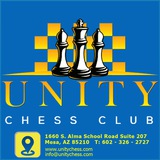He also loses after 14...Rh7 15.Bxe5 dxe5 16.Rd1 Nd7 17.Bc4!. It turns out that the apparently lost white bishop comes into the attack with decisive effect.
15.0-0+ Ke7 16.Bxe5 Qb6+ 17.Kh1 dxe5 18.Qf7+ Kd6 19.Rad1+ Qd4 20.Rxd4+ exd4 21.e5+ Kc5 22.Qc7+ Nc6 23.Bxc6
Unity Chess Club
Andrei Maksimenko 2540 Krzysztof Bulski 2470 Legnica 2010 White to move
The pawn pair b7-c6 prevents White from developing an attack on the enemy king, which is stranded in the centre. The correct decision is the crude but effective:
In the game, White offered the more valuable attacking knight for the pawn on c6 by playing 21.Nd5, but after 21...cxd5! 22.Nc7+ Kf7 23.Bxd5+ Ke7, there are no deadly bishop retreats, and continuing the variation with 24.Ra3 (24.Ne6 Qg4+ 25.Kf1 Be4 loses at once) 24...Ne5 25.Ne6 Qxc1+! 26.Qxc1 Rxd5 reveals that the advantage is now with Black.
The threat of a check on c7, plus the powerful major pieces, are deadly, e.g.:
Nothing comes from the check 22...Qg5+ 23.Kf1, and White repulses all threats.
23.Nc7+ Kf7 24.Ne6 Qb8 25.Nxd8+ Qxd8 26.Qb3+ Kg6 27.Re6 Ne5 28.Rd1 Qb8 29.Rd4
Unity Chess Club
Alexei Shirov 2695 Lucas Brunner 2530 Biel 1995 White to move
The move ...g7-g5 has seriously weakened the long diagonal, which White exploits with the aid of a small tactical operation:
When Black is forced to place a rook in such a position to avoid mate, the correctness of the sacrifice becomes obvious.
Because there is no forced win, White simply strengthens the centralisation of his pieces, so as to be prepared to create threats on the kingside, and also support the advance of his passed pawns.
